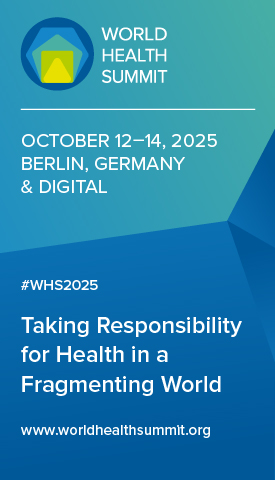PROMOTED CONTENT: Organon: Gender equity is the backbone of global prosperity
There are several opportunities within our collective grasp that can drive real prosperity for all. These opportunities are grounded in advancing gender equity and through better health. The time is now to seize these opportunities so that, together, we have the power to deliver a new era in women’s health, and economic prosperity for all
Advancing the health of women is critical to creating a healthier, more resilient and gender-equitable world. When we invest in women’s health, we not only invest in individuals, but also in their families and communities, as well as in their country’s economy and future.
There is a growing recognition among stakeholders that addressing women’s unmet health needs is key to unlocking a healthier future. It’s estimated that a $300 million investment into research on women’s health could yield a $13 billion economic return in terms of reduced healthcare costs, better quality of life and years of productivity returned to the workforce.1 Simply stated: women’s health is wealth.
Now, we must accelerate our collective action to achieve the transformational progress in women’s health that is urgently needed. The latest data show that the world is off track to meeting the Sustainable Development Goals, including SDG 5, which focuses on achieving gender equality by 2030.2 This is particularly noteworthy given the critical linkages gender equality has to other global goals.
As we envision a more prosperous future for all, here are a few approaches that can help accelerate the momentum in women’s health.
Redefine women’s health
In many people’s minds, women’s health refers only to sexual and reproductive health. Too often, the diverse health needs of women are ignored – and that has an impact.
It’s time to reframe what is considered women’s health, so that it includes not only reproductive health, but also the many conditions women face throughout their lives – for instance, endometriosis, cardiovascular disease and many others. To achieve this, we must listen to women and understand all their health needs. In taking a more holistic approach, we can search for potential solutions that can significantly impact and improve care, diagnosis, quality of life and outcomes for women. Ultimately, we can help address some of the most pressing health challenges we’re facing as a society.
Drive investment in R&D for women
Science and innovation give us the opportunity for the leapfrogs in progress in women’s health that the world needs. New research can transform the field, like what has been seen in oncology, hepatitis and other areas of medicine.
When it comes to women’s health, there are green shoots of innovation emerging all over the world. From new treatments to digital tools, these disruptive products show promise to improve health and quality of life for women, as well as drive down the cost of disease to society.
These new solutions are sparking much-needed attention from investors.
And there’s a long runway for growth. The global women’s health market is expected to reach about $63 billion by 2030, up from $41.35 billion in 2022.3
It’s not only important to develop innovations, but they must exist within a rich ecosystem to unlock their value – an ecosystem where regulators, government, civil society and the private sector are focused on ensuring innovations are accessible to all. We know that women benefit from having multiple options to meet their needs – such as a full range of contraceptive methods – and that work needs to be done to ensure that care is accessible to all women regardless of where they live or their socio-economic status. Because innovation is meaningless if it doesn’t reach people where and when they need it.
Build demographic resilience
Every country has its own unique fingerprint when it comes to gender equity and the health challenges women face. But the connective tissue across much of the world is demographic trends and the drag these forces exert on their respective economies.
Two trends that pose significant challenges are falling birth rates – some of which are below the level needed to maintain the population – and high rates of unintended pregnancy. These two trends can even exist in the same country, reflecting the complexity of reproductive health conditions.
More than 20 countries, including Japan, Thailand and Spain, are expected to see their populations fall by 50% before 2100.4 By advancing policies that increase access to fertility planning and contraceptive options, more women can participate in the economy, enabling markets to become more inclusive and, in the process, grow and thrive.
Create innovative sources of funding to drive interventions at scale
New sources of funding are needed to support health initiatives that drive gender equity. This is particularly important as governments face constrained budgets following the pandemic.
One example is sustainable financing, which is a tool that can leverage private-sector financing in support of public health goals. Today, a growing number of economies are working with the private sector and NGOs to develop sustainable financing projects to scale up the investment in women’s health. And there is growing interest given that the economic cost to societies is clear and the outcomes are measurable.
Changing the course of women’s health requires collaboration
Recently, the conversation around advancing women’s health has grown louder. The good news is it’s not just talk. More governments and others have recognised that investing in women’s health is one of the greatest opportunities for generating social and economic benefits. For example, several countries have developed national women’s health strategies to ensure women get the attention and resources that are needed.
The bottom line is: It’s up to all of us to further uplift gender equity and close the gender health gap. Such collaboration is critical to attain the SDGs and unlock the full economic potential so many countries need. Women can’t afford to wait – neither can all of society. The time to act is now.
1 The WHAM Report Finds Disparities in Biomedical Research Focused on Women and Shows Economic Benefits of Investing More – Wham Now
2 Progress on the Sustainable Development Goals: The gender snapshot 2022 | Publications | UN Women – Headquarters and In focus: Sustainable Development Goal 5 | UN Women – Headquarters
3 Women’s Health Market Size, Share & Growth Report, 2030 (grandviewresearch.com); Women’s Health Market Size to Reach $63.02Bn by 2030 (grandviewresearch.com)
4 Fertility, mortality, migration, and population scenarios for 195 countries and territories from 2017 to 2100: a forecasting analysis for the Global Burden of Disease Study – The Lancet












